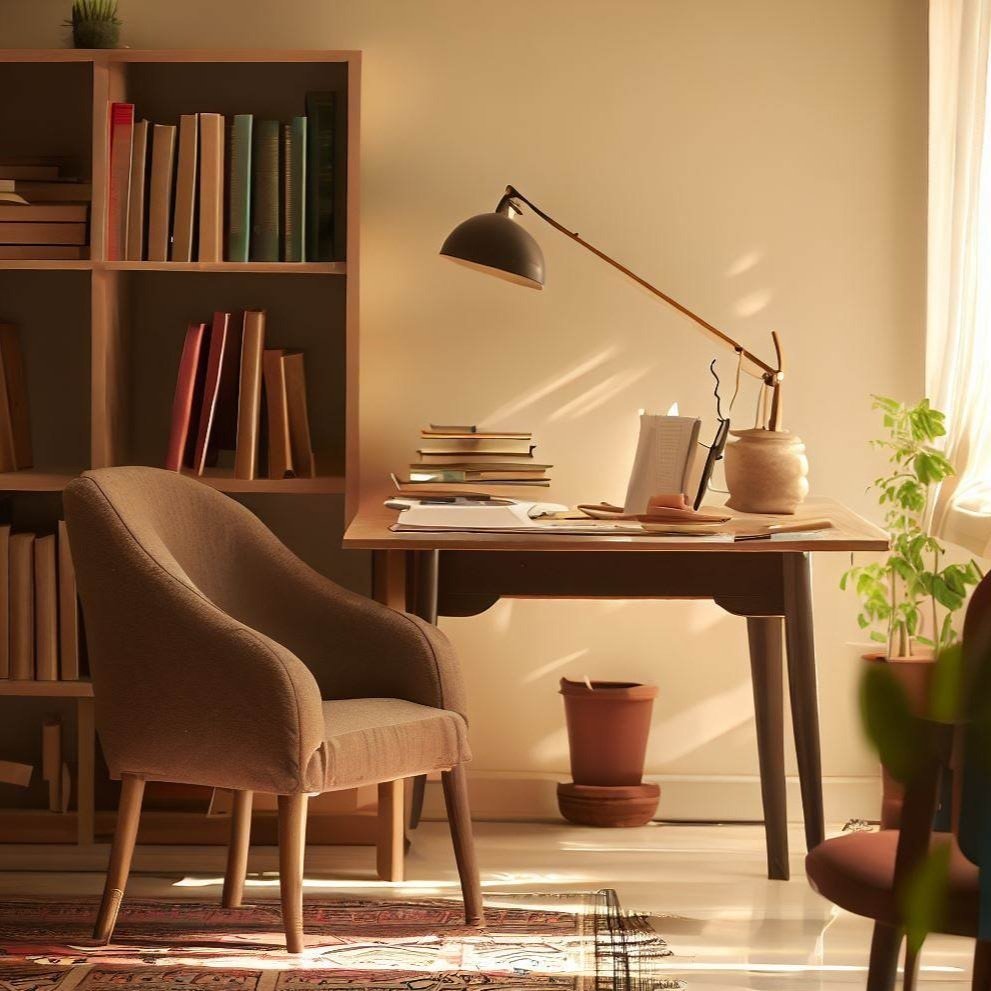How to Create a Productive Study Space at Home
Learn how to design a productive study space at home with these tips on organization, lighting, and decor to boost focus and efficiency.
Education at home can be a complex task, for it can come with its difficulties due to distractions all around. High school or college students need to have a study space so that they can’ stay distracted while doing their homework. A well-designed space can help improve students' concentration and make studying more effective. Therefore, let us dwell on the factors for the study environment that will promote the accomplishment of study objectives. Starting from determining the proper place to take a class or learning area, to arranging study materials, there are ways to make studying at home effortless despite all the challenging factors.
Choosing the Right Location
The first step to creating a productive study space is picking the right spot. It should be quiet, bright, and distraction-free. Ideally, choose a place away from where you rest or sleep. Studying in bed or near the TV lowers focus. A dedicated space helps your brain associate that area with learning, boosting productivity. No extra room? No problem—set up a small corner in your bedroom or living room. This separation between study and relaxation is vital, especially when studying at home. Creating that boundary can make all the difference in maintaining focus and boosting your efficiency.
Minimize Distractions
Distractions can severely disrupt productivity, especially when studying at home. To stay focused, minimize interruptions and create a distraction-free environment. Start by turning off:
your phone,
the TV,
unnecessary notifications.
Use apps to block social media and distracting websites. Pay attention to your environment as well. If you share space with others, inform them of your study hours to avoid interruptions. Noise-canceling headphones or gentle background music can enhance focus and create a peaceful, study-friendly atmosphere.
Organize Supplies and Materials
A cluttered environment implies a cluttered presence in the way of thinking too. Maintaining study space order gives you the power to concentrate. Before you start, collect all that is necessary – books, pencils, note-books, and etc. Ensure everything has its place. Clutter distracts and tempts you to leave your desk and thus not good for productivity. Perhaps you might want to use bins or file organizers to organize your materials in a better way. Also, have a calendar or planner in your work area. You can easily track assignments and deadlines, so your studies go uninterrupted and your mind stays calm.
Proper Lighting for Concentration
Lighting plays a key role in concentration and alertness. A study space should be well-lit. Natural light is best, as it reduces eye strain and improves your mood. If natural light is not available, choose a good desk lamp. It should provide bright and even illumination.
Avoid:
harsh fluorescent light,
too dim lighting.
Both options make it difficult to concentrate. Your goal is to create a bright and pleasant space. Good lighting helps you stay focused and productive, even during long study sessions.
Personalize Your Study Space
Add personal touches to your study area to make it more enjoyable. Decorate it with items that motivate you, such as:
plant,
artwork,
vision board with goals.
Your space that you choose should fit your personality and make you want to study or create. However, you should not overdo it – too many decorations are just as detrimental. They should be as plain as possible to be simple and serve the mainly intended purpose. A study area convenient to your preferences will significantly lessen the amount of stress and make the study process more enjoyable.
Consistency in Your Study Program
After you have found the most ideal location, then you should develop a consistent study pattern. It makes you not to lag behind in your studies. Students who follow the schedule get better results by 23%. Assign particular study hours and always use your designated space during those times. Don’t forget to take five to ten minute breaks while studying. Incorporation of short breaks taking approximately 5-10 minutes, after every fifty minutes of study increases focus by 25 %. Such breaks help your brain to gain focus and prevent it from getting exhausted during long study sessions.
Conclusion
Comfortable and efficient study is not just about having the right desk and the right chair at home. It’s all about making a space that you use for study because it has features that allow you to concentrate and help you do well in school. Picking the right location, supplying it properly and using proper lighting can help you get the most out of each study session. But don’t forget to bring some of your personality into the space to make it welcoming and cozy.
Stay up to date with our latest ideas!
Exclusive deals just for our readers! Click below to unlock special offers and elevate your shopping experience!


